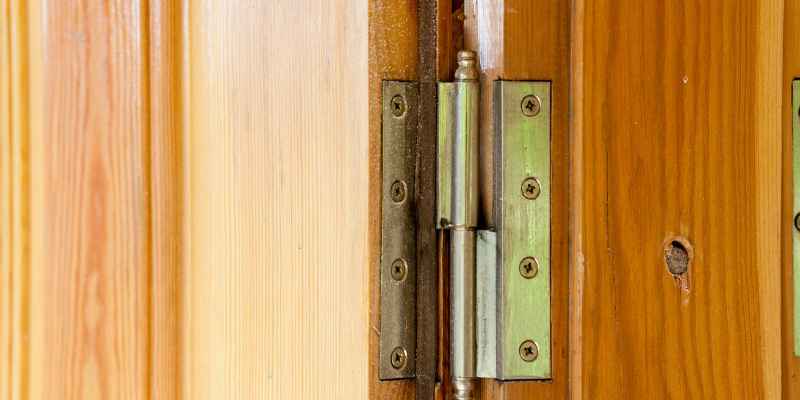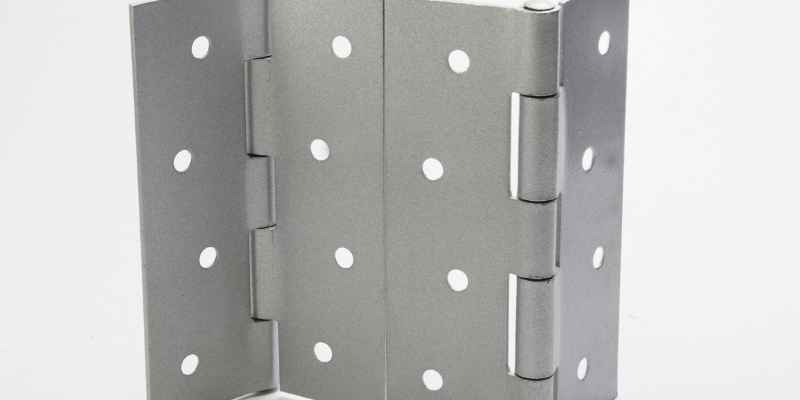Use a hinge mortising router bit for door hinges. It ensures precise and clean cuts.
Door hinges require a specific router bit to create the necessary mortise for a proper installation. By using a hinge mortising router bit, you can achieve accurate and clean cuts that are essential for a seamless hinge fit. This type of router bit is designed to remove the right amount of wood to create a cavity that snugly accommodates the hinge, ensuring smooth operation and a secure attachment.
Whether you are installing new hinges or replacing old ones, using a hinge mortising router bit will help you achieve professional-looking results. We will discuss the importance of using the correct router bit for door hinges and provide some guidance on choosing the right one for your project.
Different Types Of Router Bits
Note: Before we discuss the different types of router bits, let’s first understand what router bits are. Router bits are cutting tools used with a router to shape, hollow out, or create grooves in various materials such as wood, plastic, and metal. They come in a variety of shapes and sizes, each designed for specific woodworking tasks.
Straight Router Bit
A straight router bit, as the name suggests, has a straight cutting edge and is commonly used for straight cuts in woodworking projects. It is a versatile router bit that can perform various tasks, including dado cuts, rabbets, and edge treatments.
Dado Router Bit
A dado router bit is specifically designed for creating dado cuts or grooves in wood. Dado cuts are commonly used to join pieces of wood together or create slots for shelves in furniture. The dado router bit usually has a broader cutting edge than the straight router bit, allowing it to create wider and deeper grooves.
Flush-trim Router Bit
A flush-trim router bit is used to trim the edges of a workpiece to make them flush with another surface. This type of router bit has a bearing guide at the top that follows the shape of the surface being trimmed, while the cutting edge trims the excess material. It is commonly used for trimming edge banding, laminates, and veneers.
These are just a few examples of the different types of router bits available for woodworking projects. Each router bit serves a specific purpose, and it is important to choose the right one for your desired outcome. Whether you need a straight cut, a groove, or a flush trim, there is a router bit designed to meet your needs.

Choosing The Right Router Bit For Door Hinges
Choosing the right router bit for door hinges requires careful consideration to ensure a precise and clean cut. Use a quality straight bit with a bearing for best results and a smooth installation.
When it comes to installing door hinges, using the right router bit is crucial for achieving a professional-looking finish. The router bit you choose will determine the accuracy and quality of the hinge cutouts, ensuring that your door functions smoothly. In this article, we will explore the key factors to consider when selecting a router bit for door hinges.
Consider The Door Material
First and foremost, you need to take into account the material of the door you are working with. The type of door material determines the cutting edge that is most suitable for accurate and clean hinge cutouts. Here are some common door materials and the recommended router bits:
| Door Material | Recommended Router Bit |
|---|---|
| Wood | Straight router bit |
| MDF | Compression router bit |
Wooden doors require a straight router bit, whereas Medium Density Fiberboard (MDF) doors call for a compression router bit. By choosing the right router bit for the material, you can ensure clean and accurate hinge cutouts.
Selecting The Appropriate Shank Size
Another important consideration when choosing a router bit for door hinges is the shank size. The shank size refers to the diameter of the bit’s base, which determines its stability and rigidity. It is crucial to select a router bit with a shank size that matches your router’s collet size. Using a mismatched shank size can result in poor cutting performance, vibration, and potential damage to the bit or router.
To determine the appropriate shank size, refer to the specifications of your router and choose a router bit that matches the collet size. This ensures a secure fit and optimal performance during the hinge cutting process.
Analyzing The Hinge Size And Depth
The size and depth of the hinges also play a vital role in selecting the right router bit. Different types of hinges have varying sizes and depths, requiring specific router bits for accurate cutouts. Here are some commonly used hinge sizes and the corresponding router bit types:
- Standard hinges: Straight router bit
- Butt hinges: Straight router bit or template guide with a straight bit
By analyzing the size and depth of the hinges you are working with, you can choose the appropriate router bit that matches their specifications. This ensures that the hinge cutouts are precise and aligned, resulting in a seamless installation.
Choosing the right router bit is essential for achieving professional and accurate hinge cutouts when installing door hinges. By considering factors such as the door material, shank size, and hinge size and depth, you can ensure a smooth and efficient hinge installation process. Take the time to select the appropriate router bit for your specific needs, and enjoy the satisfaction of flawlessly functioning doors.
Using The Router Bit For Hinge Installation
Before you start cutting the hinge mortises on your door, it is important to properly prepare the door. Make sure to lay the door on a stable and secure surface, such as a workbench or sawhorses. Ensure that the door is clean and free from any obstructions that may interfere with the router’s movement. Additionally, mark the placement of each hinge on the door using a pencil or marker. This will serve as a guide when you start cutting the mortises.
Setting Up The Router
Once the door is properly prepared, it’s time to set up the router. Begin by installing a straight router bit appropriate for hinge installation into the router. It is recommended to use a 1/2-inch straight bit for this purpose. Insert the router bit into the collet of the router and tighten it securely. Next, adjust the depth of the router bit. The depth should be equal to the thickness of the hinge leaf or slightly less, to ensure a proper flush fit. Use a depth gauge or measure the hinge thickness to achieve the desired depth.
Cutting The Hinge Mortises
With the router set up, it’s time to start cutting the hinge mortises. Begin by positioning the router on one of the marked hinge lines. Hold the router firmly with both hands, ensuring a secure grip. Start the router and slowly plunge the router bit into the door, following the traced hinge line. Move the router in a clockwise direction along the marked line to cut the mortise. Take your time and make sure to stay within the marked lines. Repeat this process for the remaining hinge mortises. Once all the mortises are cut, double-check the depth and fit of each mortise for accuracy.
By following these simple steps, you can successfully use a router bit for hinge installation. Remember to always prioritize safety by wearing protective gear, such as safety glasses and earplugs. Take your time, and with a steady hand, your door hinges will fit perfectly, ensuring smooth operation for years to come.

Tips For Perfecting Your Woodworking Skills
When it comes to woodworking, perfecting your skills takes practice, patience, and attention to detail. Whether you’re a beginner or a seasoned pro, there are always ways to improve your woodworking techniques. In this blog post, we will discuss some tips to help you achieve perfect results when using a router bit for door hinges. By following these tips, you can enhance your woodworking skills and create precise, professional-looking door installations.
Practice On Scrap Material
Before you start working on your actual door, it’s essential to practice on scrap material. This allows you to familiarize yourself with the router bit and get a feel for how it cuts through the wood. By practicing on scrap material, you can make adjustments to your technique and ensure that you achieve the desired results. Additionally, practicing on scrap material helps prevent costly mistakes on your project door. Remember, practice makes perfect!
Using Proper Safety Measures
Safety should always be the top priority when working with woodworking tools. When using a router bit for door hinges, it’s crucial to follow proper safety measures to prevent accidents and injuries. Here are some safety tips:
- Wear safety goggles to protect your eyes from wood chips and debris.
- Use ear protection to prevent hearing damage from the router’s noise.
- Wear a dust mask to avoid inhaling wood dust.
- Keep your workspace clean and free from clutter to minimize tripping hazards.
- Ensure that the router is properly secured to the table or workstation.
By observing these safety measures, you can focus on your woodworking and complete your project with confidence and peace of mind.
Maintaining The Router Bit
A well-maintained router bit is essential for achieving clean and precise cuts. To ensure the longevity and effectiveness of your router bit, follow these maintenance tips:
- After each use, clean the router bit with a brush or compressed air to remove wood chips and debris.
- Inspect the router bit for any signs of wear or damage. Replace any worn-out or damaged bits to maintain the quality of your work.
- Store the router bit in a protective case or container to prevent it from getting dull or damaged.
- Regularly sharpen the router bit to maintain its cutting efficiency.
By taking care of your router bit, you can ensure that it performs at its best and delivers excellent results for your door hinge installations.
Conclusion
To summarize, choosing the right router bit for door hinges is crucial for achieving seamless and durable installations. By considering the hinge type, material, and door thickness, you can select the appropriate bit for the task. Remember, using the correct router bit ensures precise and professional results, guaranteeing the longevity of your doors.
Don’t compromise on the quality of your work and invest in the right router bit for flawless hinge installations.


